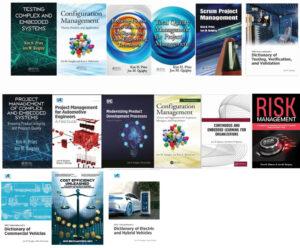QS9001 vs IATF 16949: Benefits and When to Choose
Understanding QS9000 and IATF 16949 Standards
For organizations in the automotive industry, selecting and implementing the right quality management system is vital for operational excellence. Two prominent standards, QS9001 vs. IATF 16949, offer distinct frameworks for achieving quality objectives. Over the decades, we have been involved with both approaches in many ways, from being audited and comparing performance to these expectations to coaching and consulting on the topic. This experience includes answering students’ questions for SAE International class on IATF 16949. Understanding their differences, benefits, and compatibility can help businesses make informed decisions.
What is QS9001?
QS9001, or ISO 9001, is a globally recognized quality management system (QMS) standard. It focuses on establishing a framework to ensure consistent quality in products and services across industries. Key principles of QS9001 include:
- Customer focus: Meeting and exceeding customer expectations.
- Leadership: Strong organizational leadership driving quality improvements.
- Process approach: Emphasizing efficient and effective processes.
- Continuous improvement: Building a culture of quality enhancement.
Benefits of QS9001
- Broad Applicability: Suitable for organizations across all industries.
- Global Recognition: Demonstrates a commitment to quality to customers worldwide.
- Improved Efficiency: Optimizes business processes and reduces waste.
- Enhanced Customer Trust: Increases satisfaction through consistent product delivery.
What is IATF 16949?
IATF 16949 is a specialized quality standard developed for the automotive sector. It builds upon QS9001 by incorporating additional requirements tailored to the unique needs of automotive manufacturers and suppliers. It emphasizes:
- Defect Prevention: Proactive measures to avoid product failures.
- Supply Chain Management: Stringent controls on suppliers and production processes.
- Customer-Specific Requirements: Aligning with individual automaker needs.
Benefits of IATF 16949
- Automotive Focus: Directly addresses automotive industry challenges.
- Process Standardization: Harmonizes global automotive supply chain requirements.
- Risk Management: Strengthens defect prevention and risk mitigation.
- Market Access: Essential for doing business with many automakers.
QS9001 vs IATF 16949: Key Differences
| Aspect | QS9001 | IATF 16949 |
|---|---|---|
| Scope | General industries | Automotive-specific |
| Applicability | All sectors | Automotive supply chain |
| Focus | Quality consistency | Defect prevention |
| Certification Requirement | Optional in some industries | Mandatory for automakers |
When to Choose QS9001 or IATF 16949?
- Choose QS9001 if:
- You operate in non-automotive sectors.
- Your focus is on general quality management.
- Global recognition and flexibility are your primary goals.
- Choose IATF 16949 if:
- You’re part of the automotive supply chain.
- Automakers or suppliers require this certification.
- You need to adhere to stringent defect prevention standards.
Why Both Standards May Be Necessary
For organizations operating in diverse industries or transitioning between sectors, implementing both QS9001 and IATF 16949 can:
- Broaden Market Reach: Enable participation in both general and automotive markets.
- Streamline Processes: Create a unified approach to quality management.
- Mitigate Risks: Strengthen quality assurance across different operational frameworks.
Conclusion: Choosing the Right Standard
In the debate of QS9001 vs IATF 16949, the choice depends on your industry and quality goals. While QS9001 offers versatility and global recognition, IATF 16949 delivers targeted solutions for the automotive sector. Combining both can provide a competitive edge, ensuring quality excellence and market compliance.
If you are looking for additional information on these two standards, please get in touch with us at the links below.
Conclusion
Audits are a critical component of business management, offering insights into operations, compliance, and growth opportunities. By understanding the types of audits and their benefits and addressing frequent problems, organizations can leverage audits to drive success.
For more information, contact us:
Follow us on social media at:
Amazon Author Central https://www.amazon.com/-/e/B002A56N5E
Follow us on LinkedIn: https://www.linkedin.com/in/jonmquigley/

